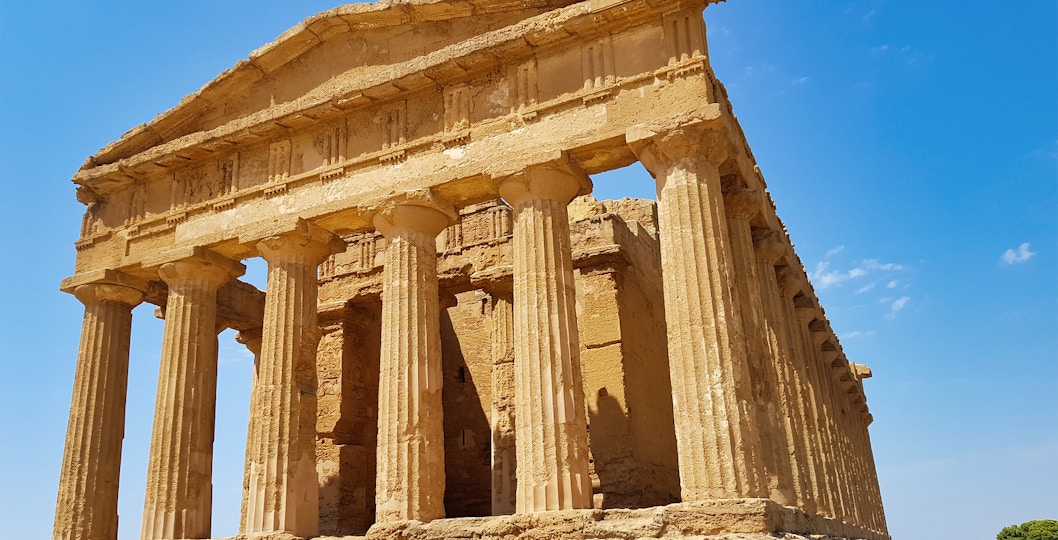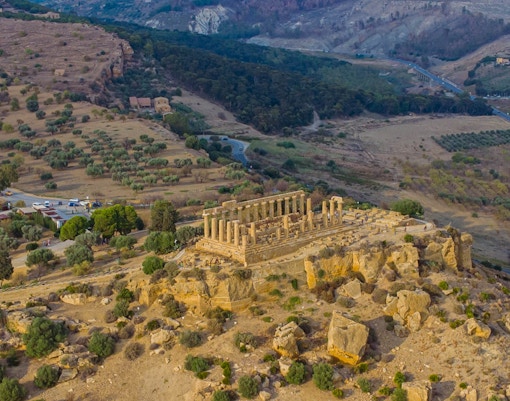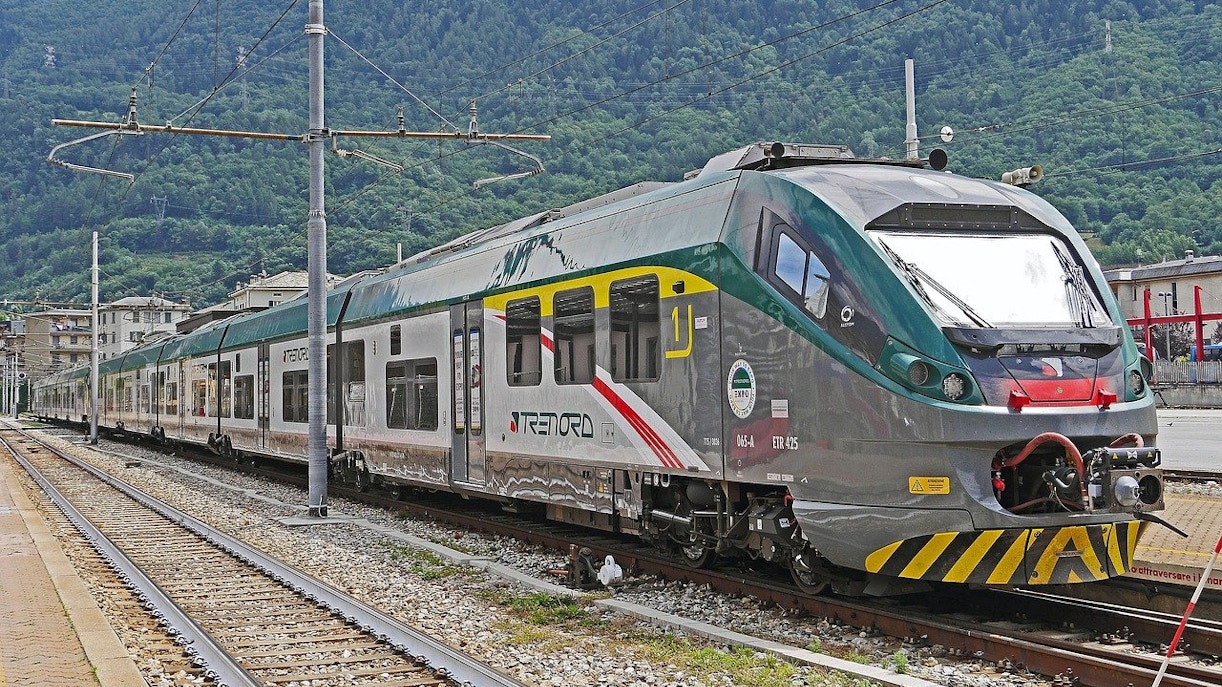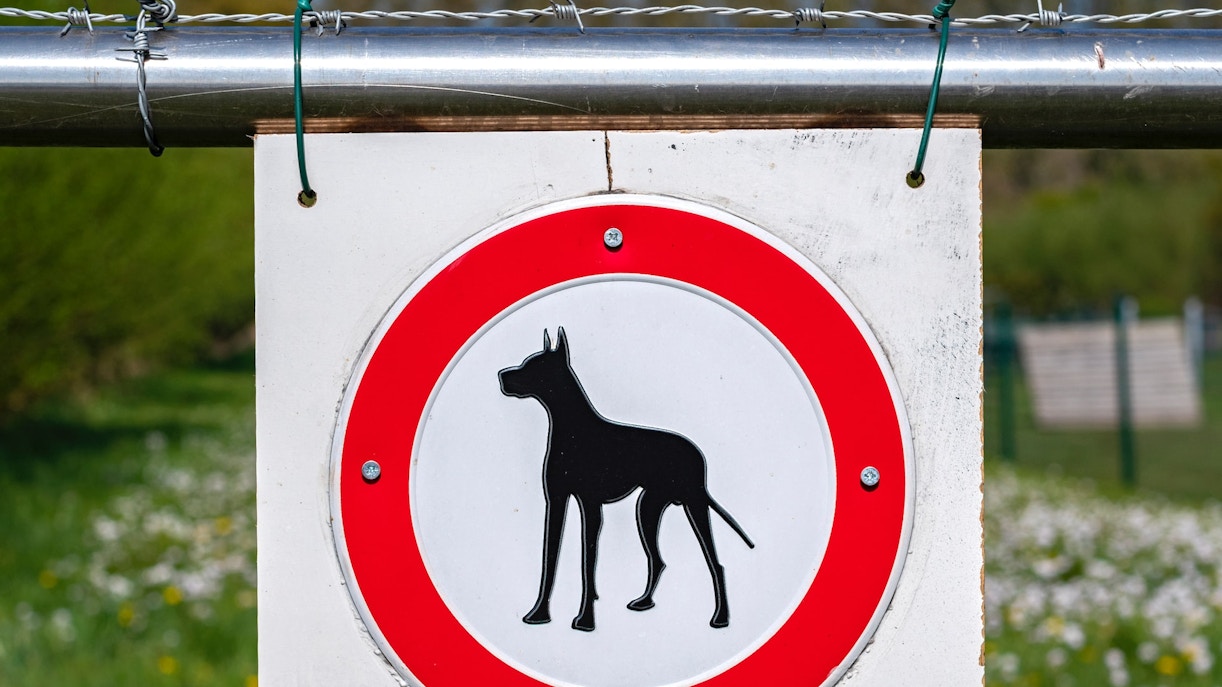Valley Of The Temple Tickets
Headout is an authorized and trusted partner of the venue, offering curated experiences to enjoy this attraction. This is not the venue's website.

- Visit some of the most well-preserved Doric temples built during the Hellenic period of Greece.
- Your skip-the-line admission ticket cuts down any potential delays at the entrance.
- Walk through the Golden Gate and marvel at the imposing temple of Olympian Zeus.
- Explore the Olympeion complex with its Chthonic Deities sanctuary, sacellum, tholos, and admire the grand Doric Columns of the Temple of Heracles and Temple of Concordia.
- Upgrade your ticket to visit the Kolymbethra Garden and soak in the heady aroma of orange blossoms and olive trees.
- Visit some of the most well-preserved Doric temples built during the Hellenic period of Greece.
- Your skip-the-line admission ticket cuts down any potential delays at the entrance.
- Walk through the Golden Gate and marvel at the imposing temple of Olympian Zeus.
- Explore the Olympeion complex with its Chthonic Deities sanctuary, sacellum, tholos, and admire the grand Doric Columns of the Temple of Heracles and Temple of Concordia.
- Upgrade your ticket to visit the Kolymbethra Garden and soak in the heady aroma of orange blossoms and olive trees.
Inclusions
- Skip-the-line access to Valle dei Templi
- One digital Pemcards postcard
- Access to Kolymbethra Gardens (optional)
Exclusions
- Guided tours
- Tip: One spot you absolutely should not miss is the Temple of Olympian Zeus. This colossal structure offers a glimpse into the ambitious architectural aspirations of ancient times.
- Entry is free on Mar 10, as well as the first Sunday of each month.
- 2 electric wheelchairs are available for visitors with special needs. There is no additional charge for the service, but requests for the wheelchair have to be made at least one day prior to the date of arrival.
- Pets are allowed inside the Valle dei Templi. However, all animals must be put on leashes, and large animals will also have to be equipped with a muzzle. A scoop and hygienic bag are also compulsory.
- The pets are also not allowed to enter any of the temples or approach the protected monuments.
- These tickets can't be cancelled or rescheduled.
Why Visit Valle dei Templi in Sicily?

- Valle dei Templi in Sicily is the world’s oldest and most well-preserved example of Greek civilization and architecture.
- The UNESCO World Heritage Site houses the remains, ruins, and restored reconstructions of the Greek architectural marvels of the city of Acragas, dating back to the 5th and 6th centuries BC.
- Here you will find the remains of seven Doric-style temples, the chamber of the house of parliament in ancient Greece, a Greek theatre, oratory, gymnasium, and more, from as early as 580 BC.
- The landscape of Valle dei Templi, spanning over 1300 hectares, is one of the largest archaeological sites in the world, portraying the evolution of ecology in the region.
- Some of the must-visit highlights on the site include the temples of Juno, Concordia, Zeus, and Athena, Theron’s Tomb, the Bouleuterion, and the Regional Museum of Archaeology.
Your Valle dei Templi Tickets Explained

Valle dei Templi Skip-the-Line Tickets
- Discover classic Greek architecture in this Sicilian Valley of Temples built by Greek colonists from the Crete and Rhodes islands.
- With your Skip-the-Line access tickets, you can jazz past the tiresome queues at the attractions and head straight to the part where you explore the most well-preserved Doric temples.
- Overwhelm your inner Greek mythology nerd as you look up at the imposing Temple of Olympian Zeus, the King of Gods, the Temple of Juno, the Temple of Heracles and the Temple of Castor and Pollux, among others.
- Visit the catacombs of the early-medieval Byzantine necropolis at this UNESCO World Heritage Site.
- Treat your senses to the Mediterranean countryside produce, as you take a stroll around the Kolymbethra Garden, with the citrusy aroma of oranges and the Italian beauty of olives abounding in the vicinity.
Valle dei Templi Sicily Highlights
.jpeg?auto=format&w=510.8727272727273&h=401.4&q=90&fit=crop&ar=14%3A11&crop=faces)
Temple of Hera Lacinia (Juno)
The Temple of Hera Lacinia or Juno is the most famous of all the ancient temples at Valle dei Templi. Here you will see the remains of the Doric-style temple, consisting of the front colonnade, parts of the architrave, and the frieze, dating back to 450 BC.

Temple of Concordia
The Temple of Concordia is one of the most well-preserved edifices of Greek architecture in the world. The temple’s six-column facade, the pronaos, the basement, the tympani, the cella, and the pylos with the stairs can all be seen on the site.

Temple of Asclepius
In the middle of the San Gregorio plain, you will find the Temple of Asclepius, which was built to be right in front of the city. The temple said to be built in the late 5th century BC is comparatively small, measuring just 21.7 m x 10.7 m.

Temple of Heracles
Although built in the mid-5th century BC, what remains of the Temple of Heracles show the renovation, expansion, or replacements done to the structure towards the end of the 6th century BC. It also shows exemplary anastylosis work done in the 20th century.

Temple of Olympian Zeus
The Temple of Olympian Zeus was the largest Doric temple ever constructed. This unfinished temple, now in its ruins, was a fine example of the extravagance of the Akragans, adorned with marble statues and large columns strengthened with a tall curtain wall.

Temple of Vulcan (Temple of Hephaestus)
The Temple of Vulcan, also known as the Temple of Hephaestus, was built around 430 BC, over an archaic sacellum (shrine or chapel). You may note that some of the decorative elements on the temple have been recently reconstructed.

Temple of Demeter (Church of Saint Blaise)
The Temple of Demeter, dedicated to Artemis - the Goddess of Chastity, was a place of ritual offerings to femininity, built in 470 BC. Today, the remains that stand on Hill Rupe Atenea, are a part of the Church of Saint Blaise, which existed in the 12th century.

Temple of Athena (Santa Maria dei Greci)
Unlike most temples on-site, the Temple of Athena opens its doors to show the interior chambers and atrium. The temple situated on the Hill of Girgenti consisted of an atrium, the naos, and the rear chamber, which were later converted into the Norman Church of Santa Maria dei Greci.

Theron’s Tomb
Theron’s Tomb, often misguided by the name, is actually a funeral tower that belonged to the Roman cemetery Necropoli Giambertoni. The building was built in the late Hellenistic period and stands as a fine combination of Doric, Ionic, and Attica orders.

Bouleuterion
The Bouleuterion, a rectangular structure with a semicircular cavea, was built as the chamber of the house of public representatives. However, in the 3rd century AD, it was converted into a hall for music and poetry recitals. Today, you can see what remains of the radial rows of seats and the entrance.

Temple of Castor and Pollux
The Temple of the Dioscuri, also known as the Temple of Castor and Pollux is one of the sights at Valle dei Templi that was reconstructed from the remains of other temples, in the early 19th century. This modern recreation includes four columns and an entablature.

“Pietro Griffo” Regional Museum of Archaeology
The Agrigento Regional Museum of Archaeology, named after Pietro Griffo, archaeologist and former Superintendent of Agrigento, is home to over 5000 artifacts related to Greek temples, rulers, and history. The museum situated on the Hill of Saint Nicolas consists of 17 display rooms with two permanent and a few temporary exhibitions.
Plan Your Visit To Valle dei Templi in Sicily

- Timings: Monday to Sunday 8:30 A.M. – 8.00 P.M.
- Last Entry: 7:00 P.M., 1 hour prior to closing.
- Free Entry: First Sunday of each month and on the 10th of March.
- Best Time To Visit: Early mornings as soon as it opens or at least before noon, as there are fewer crowds then and the site is extensive.

Address: 92100 Agrigento, Free municipal consortium of Agrigento, Italy.
- By Train: SAL line.
Nearest Station: Agrigento Centrale, Piazza Marconi. - By Bus: Local buses numbered 1, 2, 2/, and 3/ from Piazzale Rosselli bus station and Piazza Marconi railway station, Agrigento.
Nearest Stop: Agrigento Piazzale Vittorio Emanuele, Fermata Museo Archeologico, Fermata Templi-Gate V and Fermata Tempio di Giunone. - By Car: Distance From Airport: 159 Km from Falcone Borsellino Airport, Palermo | 161 Km from Fontanarosso Airport, Catania | 181 Km from Vincenzo Florio Airport, Trapani.
Car Parking: Temple of Hera Lacinia (Juno) entrance | Gate V | Opposite the Entrance/Ticket Office at Hellenistic Theatre.

- Dogs and other pets are allowed at the Valle dei Templi, provided they are on a leash and muzzled, if larger.
- However, pets are not allowed to enter the temples or approach the monuments within the Archaeological Area.
- If taking along a pet, you must carry a scoop and a hygienic bag to collect dejections.
- Electric wheelchairs are available to rent for free for up to three hours by visitors with reduced mobility.
- Some parts of the site are open to the public only on prior request. Please check the map and website before entering.

- La Chiesa di San Gerlando: The Church of San Gerlando is an artistic mix of various historic and geographical styles. The church features an Arab-Norman design on a Gothic-Chiaramontano structure with Renaissance artwork and Baroque decoration.
- Punta Bianca Agrigento: The area of Punta Bianca - Monte Grande is best known for its pristine beaches, its cobalt-crystalline sea, and the picturesque vistas of the surrounding historic town from up Monte Grande.
- Scala Dei Turchi: Also known as the ‘Turkish Steps’, this wavy and irregularly shaped rocky cliff on the coast of Realmonte, Agrigento, attracts tourists and locals alike to admire its mineral-imbibed pure-white color.
- Farm Cultural Park: This art gallery and exhibition space at Favara, Agrigento, is considered to be a modern take on a cultural and historic center. The space is alive with permanent displays, temporary shows, cultural events, talks, screenings, workshops, and more.
All Your Questions About Valle dei Templi Tickets Answered
A. You can buy entry tickets to Valle dei Templi online.
A. Yes, you can buy Valle dei Templi tickets online for a skip-the-line entry to the site.
A. Valle dei Templi tickets are priced at €10 per person.
A. Valle dei Templi in Sicily is the world’s oldest and most well-preserved example of Greek civilization and architecture. It houses the remains, ruins, and restored reconstructions of the ancient Greek city of Acragas, dating back to the 5th and 6th centuries BC.
A. There are three access points to enter Valle dei Templi - Hellenistic Theatre, Temple of Hera Lacinia (Juno), and Gate V.
A. Valle dei Templi is located in the province of Agrigento, on the Mediterranean island of Sicily, in Italy.
A. Some of the highlights of Valle dei Templi include the temples of Hera Lacinia or Juno, Concordia, Asclepius, Heracles, Hephaestus, Zeus, Demeter, Athena, Castor, and Pollux, Theron’s Tomb, the Bouleuterion, and the Pietro Griffo Regional Museum of Archaeology.
A. You can reach Valle dei Templ by car in about 2 hours from any of the airports in Sicily. Alternatively, you could take a train to the Agrigento Centrale Station at Piazza Marconi, or a bus to Agrigento Piazzale Vittorio Emanuele, Fermata Museo Archeologico, Fermata Templi-Gate V, or Fermata Tempio di Giunone stop.
A. Valle dei Templi is open daily from 8:30 A.M. – 8.00 P.M., with the last entry at 7:00 P.M. The attraction allows free entry to visitors on the first Sunday of each month and on the 10th of March.
A. Yes, guided tours are available at Valle dei Templi.
A. Apart from multiple car parks and ticket counters, Valle dei Templi houses a cafe and a bookshop. Other facilities such as toilets are provided at the ticket counters and the cafe.
A. Yes, up to 85% of the Valle dei Templi site is wheelchair accessible. Electric wheelchairs can be rented for free at the ticket counters for up to 3 hours to tour the attraction.
A. Yes, photography is allowed in Valle dei Templi.
A. Yes, audioguides are available in multiple languages (Italian, English, French, Spanish, German, and Chinese) at Valle dei Templi which can be rented from the ticket counter/entrance.
A. Yes, dogs are allowed at the Valle dei Templi, provided they are on a leash and muzzled, if larger. However, pets are not allowed to enter the temples or approach the monuments within the Archaeological Area. Make sure you carry a scoop and a hygienic bag to collect dejections.
A. It could take anywhere between 2 - 6 hours to cover the entire Valle dei Templi depending on how much you wish to see and to what detail.
A. The farthest temple is about 2 km from the entrance so the entire walk would be around 4 - 5 Km long.
A. Valle dei Templi in Sicily is the world’s oldest and most well-preserved example of Greek civilization and architecture, which is marked as a UNESCO World Heritage Site. Here you will find the remains of seven Doric-style temples, the chamber of the house of parliament in ancient Greece, a Greek theatre, oratory, gymnasium, and more, from as early as 580 BC.






